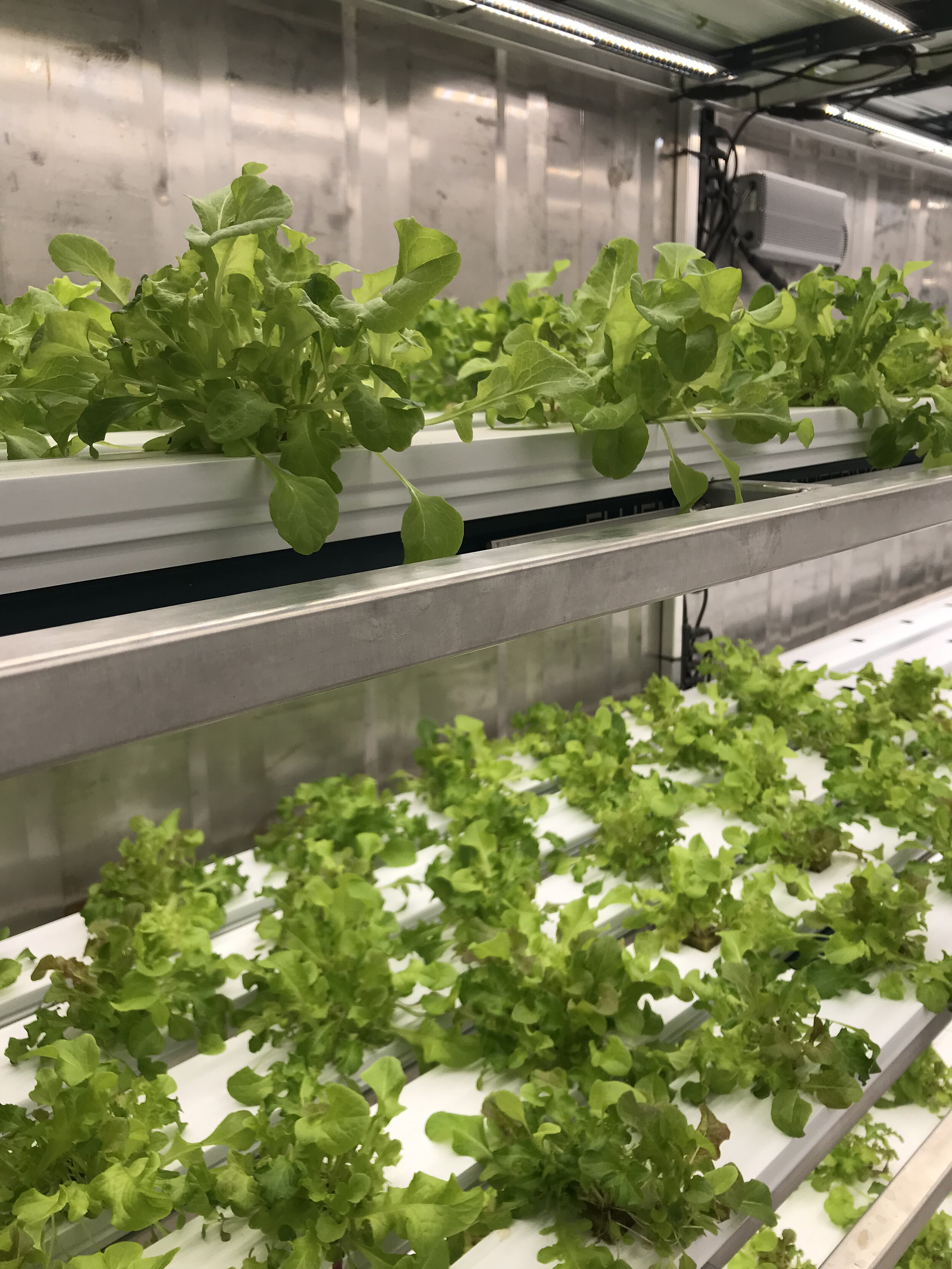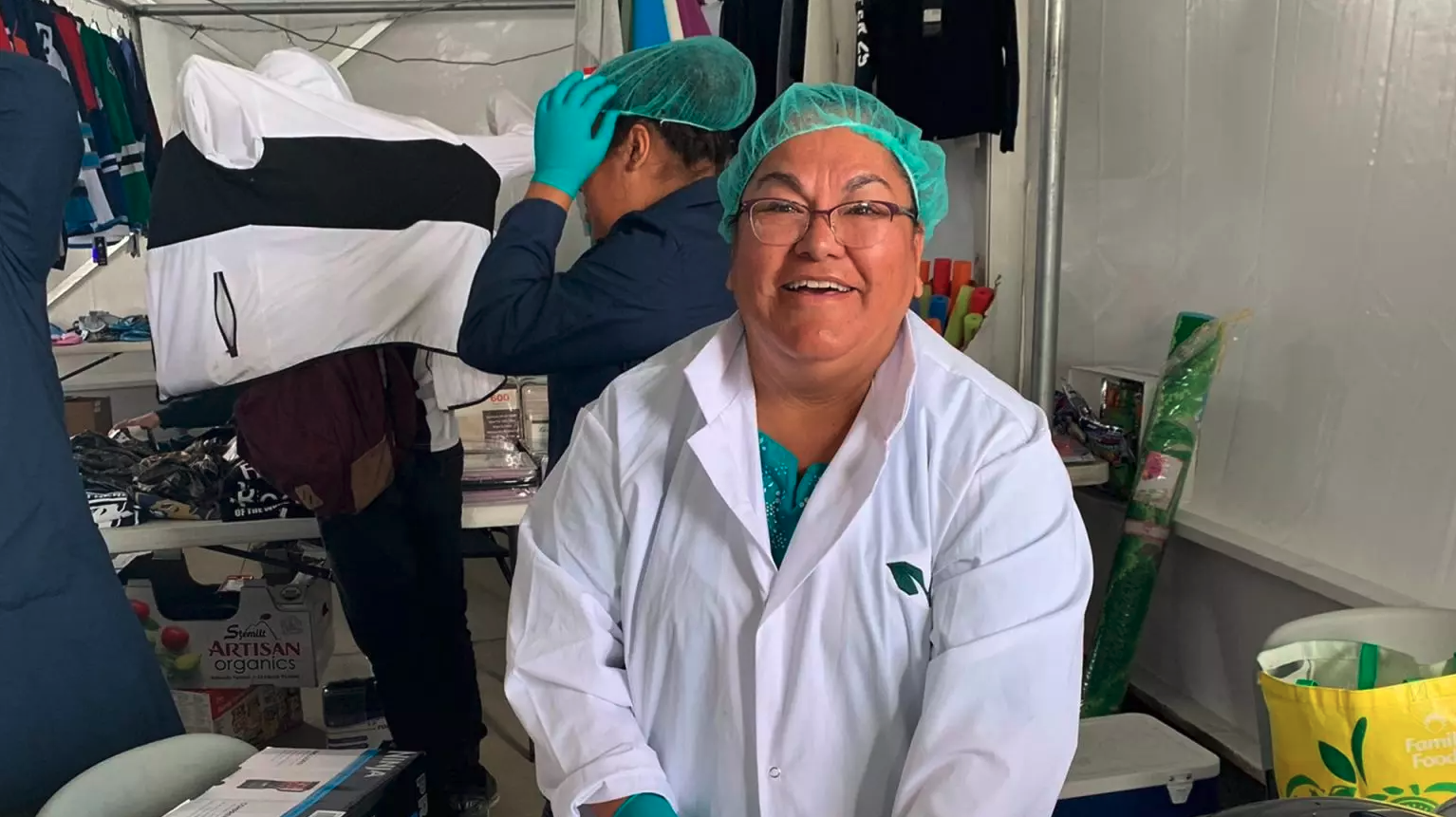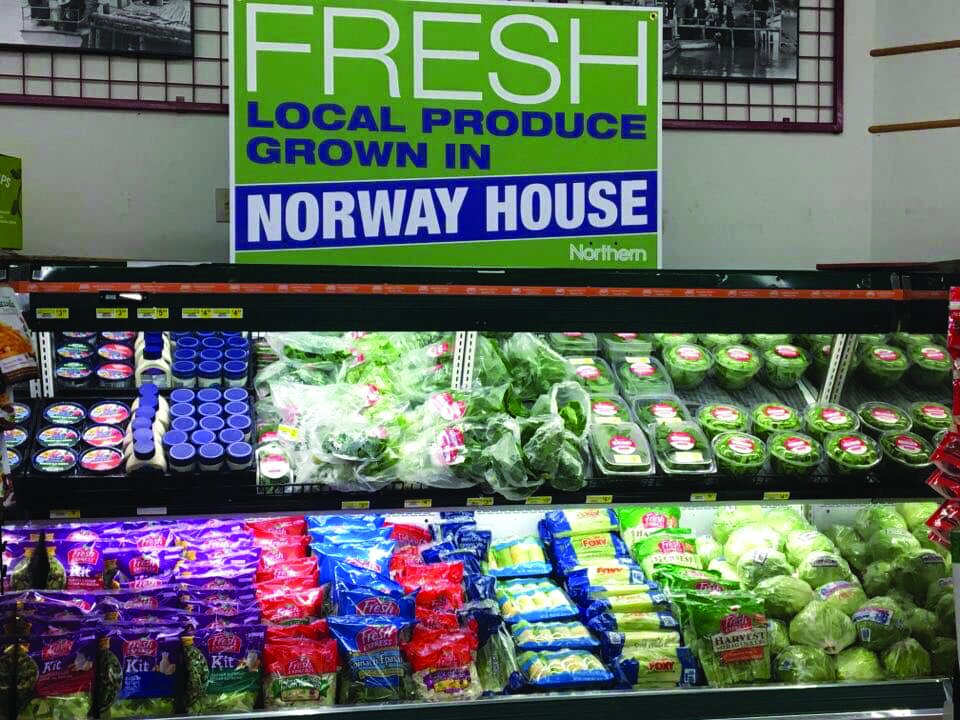Norway House: Increasing Food Security for First Nations
Project at a Glance
- Installed in summer 2019 and located in Norway House Cree Nation, Treaty 5 Territory.
- Project goal: Add new jobs, provide better food, and serve as an economic development opportunity.
- Distribution model: Produce is sold to the Northern Store and locally-owned grocery store. Produce is also delivered to the local school and community members can sign up for a subscription to receive the greens directly.
- Impact: Community members gain access to fresh produce and all profits from the project are retained as band revenue.
- Operator: Two local part-time operators share weekly responsibilities.
Learn how a northern First Nation community is using a container garden to grow food locally for its school and hospital and the impact it’s had so far.
Norway House Cree Nation is one of the largest Indigenous communities in Manitoba, with a growing population of 7,500 community members and an additional 500 community council members. The community has long been recognized as a progressive and vibrant community, boasting a large number of amenities as it serves as a gateway to Northern and Eastern communities of Manitoba.
Challenge
Norway House Cree Nation had food sovereignty as a crucial priority in their community strategic plan and economic development strategy. They were looking to find healthy and sustainable solutions and were looking for projects that met these requirements.
Solution
Norway House Cree Nation partnered with BDO, Food Matters Manitoba, and The Growcer, to make the community’s project a reality.
BDO helped manage the project from start to finish, providing services such as accounting, administration, and strategic business planning. The process included in-community workshops and recruitment in order to meet the unique needs of the remote northern Manitoba community.
“No matter what the local situation is, there’s always an ability. Where there’s a will there’s a way,” says Jacques Marion, an economic development consultant at BDO Consulting. “If there is anything out there - funds wise - that can help assist a community in bringing such a terrific growing food system to increase the health component in the community, we’re always up for a challenge.”
“Norway House Cree Nation is enthusiastic in bringing the Growcer’s hydroponic farm to our community. It will allow us to provide a healthy food source for our people and be the foundation for creating a healthier, growing community.
Having partnered with BDO to help manage the project from funding to operations has made the establishment of this business a straightforward and welcomed venture. ”
The project is managed by the band council and goes by the name, Life Water Gardens (Pimâtisiwin Nipî Kistikânihk). Virginia Muswagon and Ian Maxwell are co-managers and together they plan, seed, harvest, and distribute the produce to the local community - either directly to community members or through the school and local store.
“I can’t say enough about what Virginia has done. During the York Boat Days she created a lot of excitement . . . she made sure all the [food] booths were using the produce for all their burgers [and other foods],” Maxwell shares. “She [also] made kale-Saskatoon berry smoothies and we couldn’t get enough of that.”
The smoothies were a hit - especially among the youth. “The kids really liked it,” Muswagon adds. It didn’t stop with smoothies either, Muswagon says the biggest impact of the entire project has been on the youth.
“The biggest impact is at Helen Betty Osborne [Ininiw Education Resource Centre] . . . [where] 600 to 700 students are consuming our produce every day,” Muswagon says. The local school has 1,500 students, a vast majority of which are Indigenous. Students are able to visit the cafeteria starting in grade 6, and older students in grades 9 and up help in the cafeteria occasionally preparing salads, sandwiches, soups, and other meals.
“We need to introduce this [healthy eating] at that age or even younger, but grades 6 to 12 is when I think they can start going to the cafeteria and they can get a salad or a sandwich. These things look so good . . . and the chef there is really happy with our produce . . . if you can see it, it speaks for itself,” Muswagon says.
“The biggest impact is at Helen Betty Osborne [the local school] . . . where 600 to 700 are consuming our produce every day.”
In addition to adding fresh produce to meals, the chef at the school experiments with other tasty options such as preserving spinach to make spinach dip and cooking fresh herbs into the soup. Muswagon also says that some of the teachers have shared their own recipes for how to cook the uncommon vegetable of bok choy and Maxwell shares a story of one child who can’t get enough of their pac choi.
“It’s a myth to say that young people won’t be interested in salad, or pac choi and noodles, or other leafy greens. They’re very excited about it,” Maxwell says.
Results
-
Locally grown produce is available at the Northern Store.
-
The container garden employs two community members for a total of 25 to 30 hours per week. Three other employees help on a part-time basis with harvesting and packaging.
-
Around 600 to 700 students at the local school, Helen Betty Osborne Ininiw Education Resource Centre, can eat fresh produce daily.
-
Norway House Cree Nation added a packaging unit that allows the growers to easily store, process, and package their harvested produce.
Going offline?
Download a PDF version of the Norway House Cree Nation case study below:





